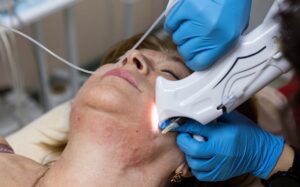PET CT Scan – The Miracle Scan That Saved Lives

PET CT Scan evaluates organ and tissue functions by using small amounts of radioactive chemicals called radio-tracers or radiopharmaceuticals, a specific camera, and a computer. PET CT Scan may detect the early development of disease before other imaging tests because it detects changes at the cellular level.
Berlin diagnostics is one of the best diagnostic centre in Ranchi which has contributed a lot with its PET CT Scan to the city for cancer patients. Berlin Diagnostics has introduced the first PET CT Scan in Ranchi, Jharkhand. The preparation guide for PET CT Scan is available both online and offline.
This article focuses on the importance of PET CT Scan and how it has largely contributed to the treatment of cancer patients in Ranchi.
What is PET CT Scan?
Positron emission tomography is referred to as PET CT Scan. This test is for the patients who are battling cancer. Early detection of cancer, heart problems, and brain disorders, as well as problems of the central nervous system, is possible to examine with this test. A modest dose of a radioactive tracer is delivered into the body during this examination. The PET CT Scan component of the PET CT Scan measures the tracer’s uptake to highlight and mark most malignancies. It’s a full-body PET CT Scan. It can detect cancer anywhere in our body using this test.
At work, a positron emission tomography (PET CT Scan) scan creates images of your inside organs and tissues. The PET CT Scan- scanner and a radiotracer, a harmless injectable radioactive substance, are used in the test. The scanner finds sick cells that absorb a lot of the radiotracer, indicating a possible health issue.
What is PET CT Scan used for?

PET CT Scan can be used:
1) Blood flow, oxygen usage, and blood sugar (glucose) metabolism are just a few of the critical functions that may be measured.
2) Determine which organs and tissues aren’t functioning properly.
3) To help gauge cancer spread, detect malignant tumour cells (metastasis).
4) Assess the effectiveness of a treatment plan and assist your healthcare practitioner in making any necessary adjustments.
5) determine whether cancer has returned after treatment.
6) evaluating the prognosis.
7) assessing the tissue metabolism and viability.
8) determine the effects of a heart attack myocardial infarction on areas of the heart.
9) identify areas of the heart muscle that will benefit from angioplasty or coronary artery bypass surgery (in combination with a myocardial perfusion scan).
10) evaluating the brain abnormalities, such as tumors, memory disorders, seizures and other central nervous system disorders.
11) map normal human brain and heart function.
Importance of PET CT Scan
Nuclear medicine examinations provide information that is often unavailable through other imaging methods. Details about the function and architecture of body structures may be included in this information. For many disorders, nuclear medicine provides the most relevant diagnostic or therapy information. A nuclear medicine scan is less expensive than exploratory surgery and may provide more precise information. PET CT Scan imaging can detect the early development of disease before it shows up on other imaging tests like CT or MRI because it detects changes in the body at the cellular level.
CONCLUSION
The benefit of the combined CT and PET CT Scan is that there is less possibility for error because both scans are performed at the same time without the patient needing to change positions. The patient benefits from having CT and PET CT Scan done at the same time rather than at two different occasions.





